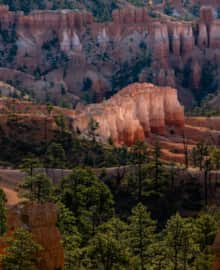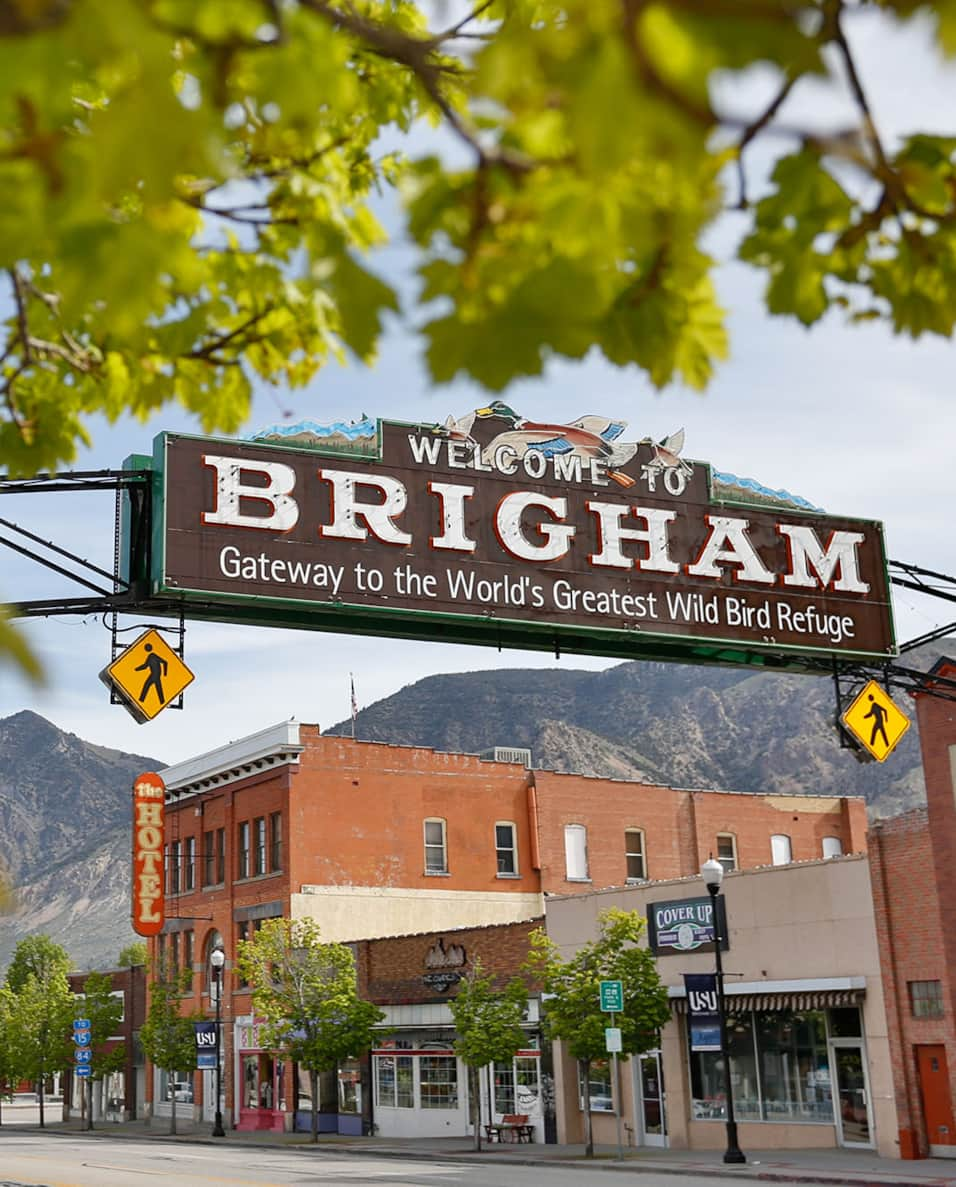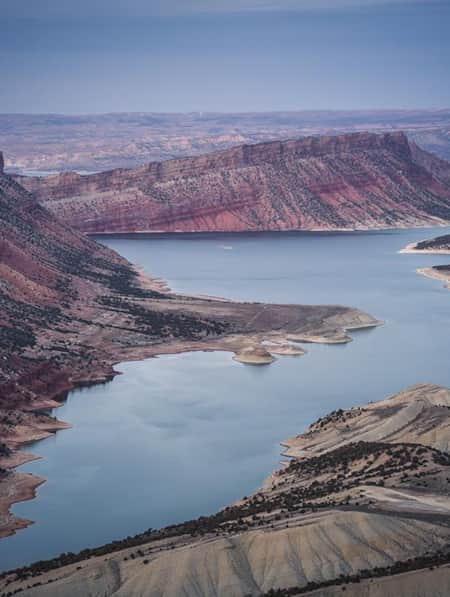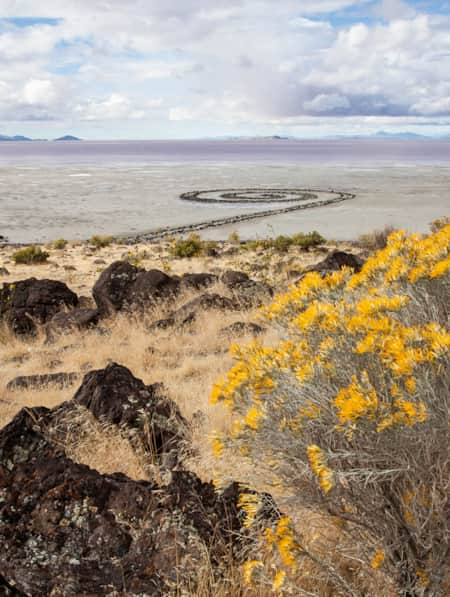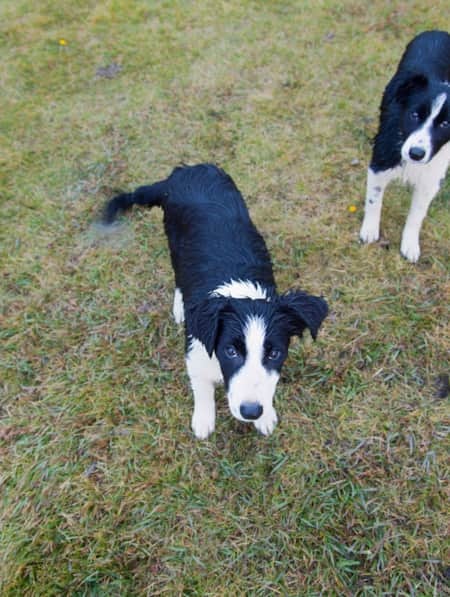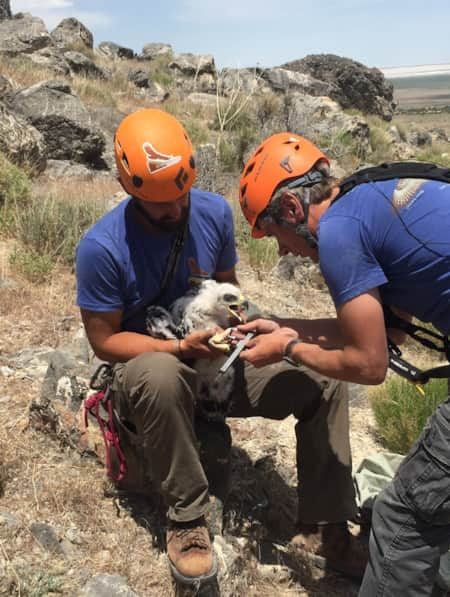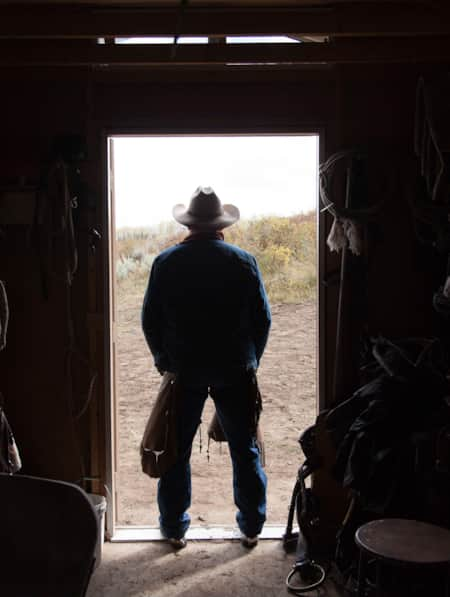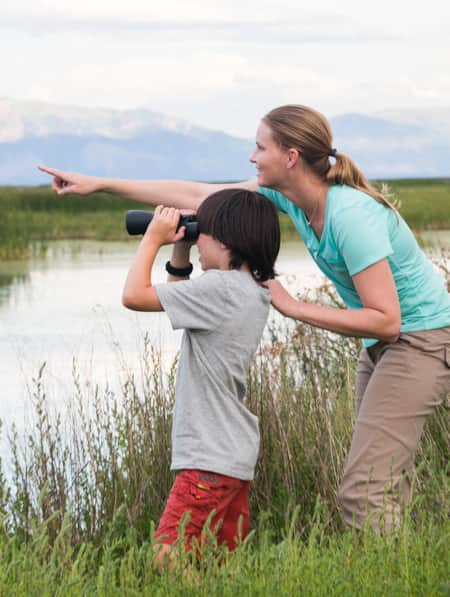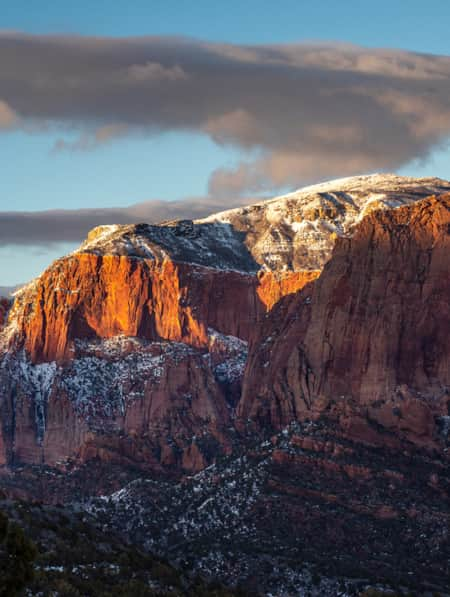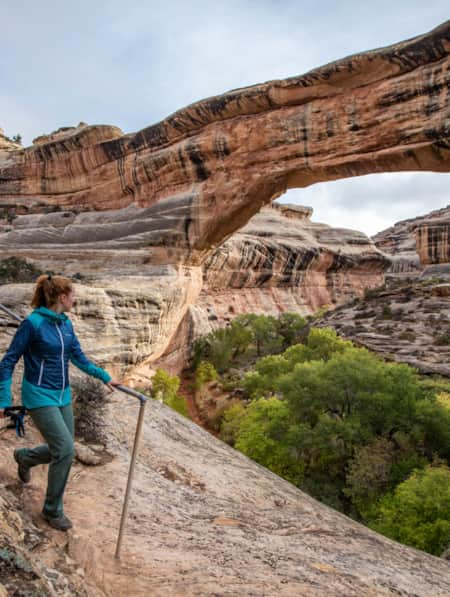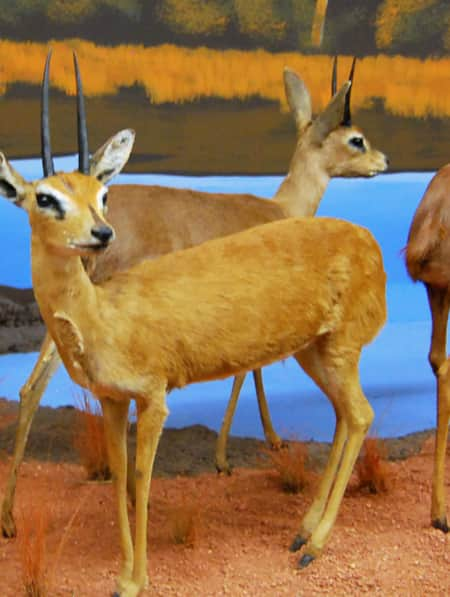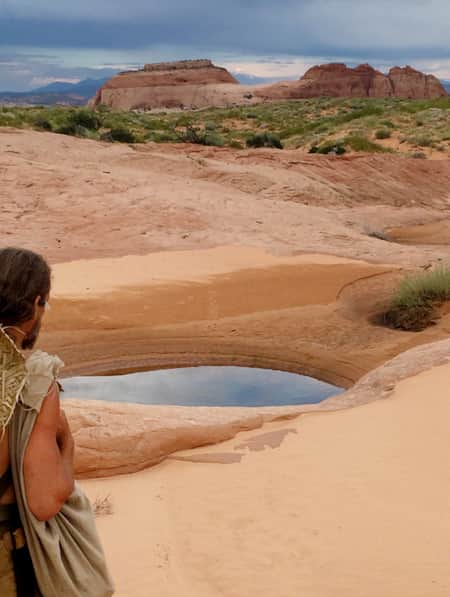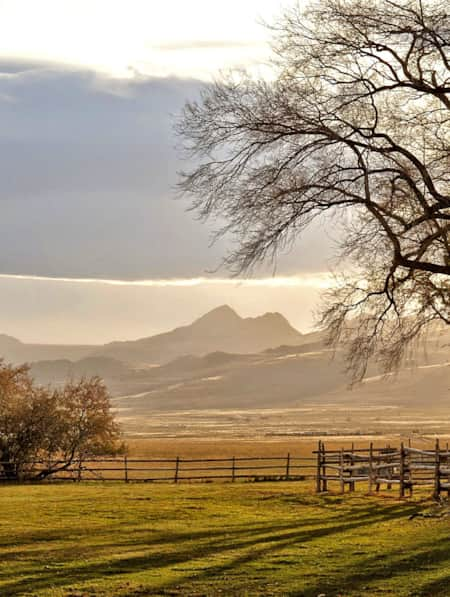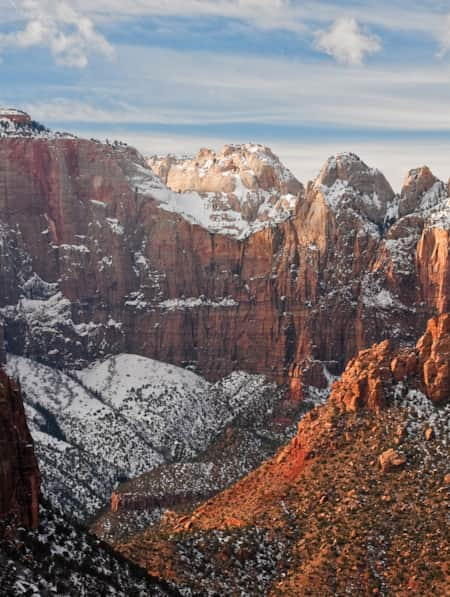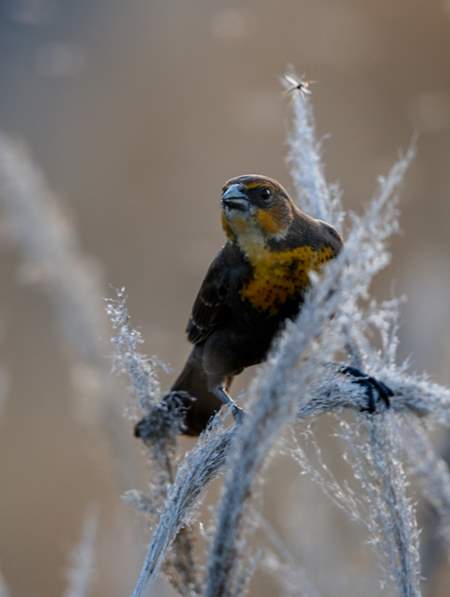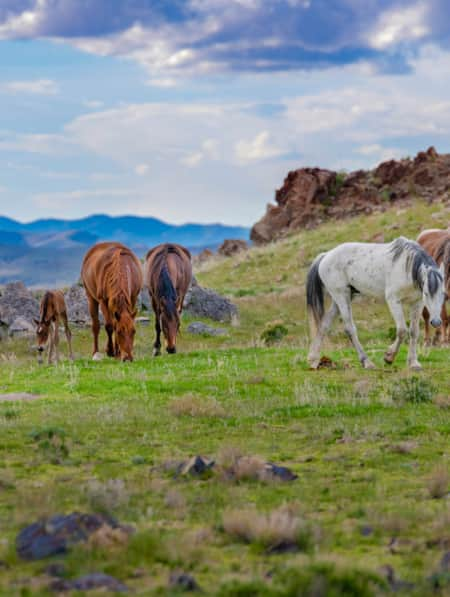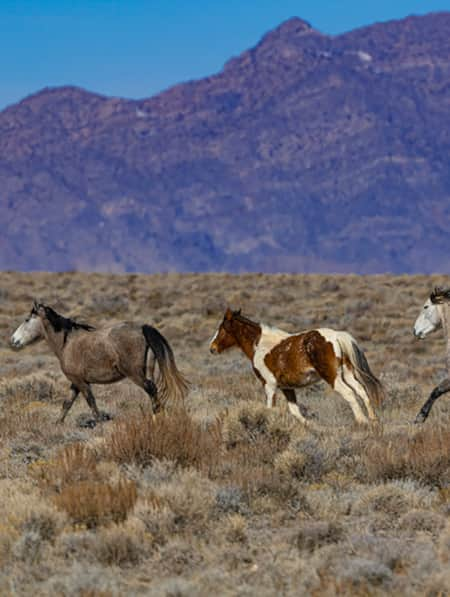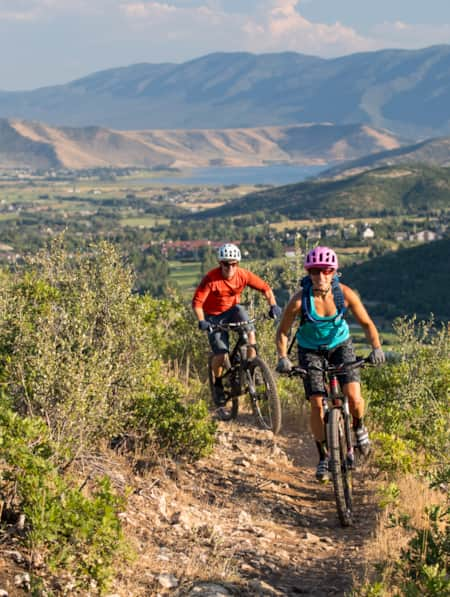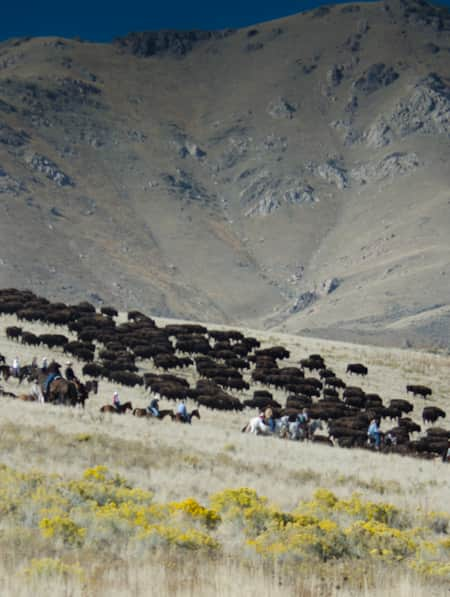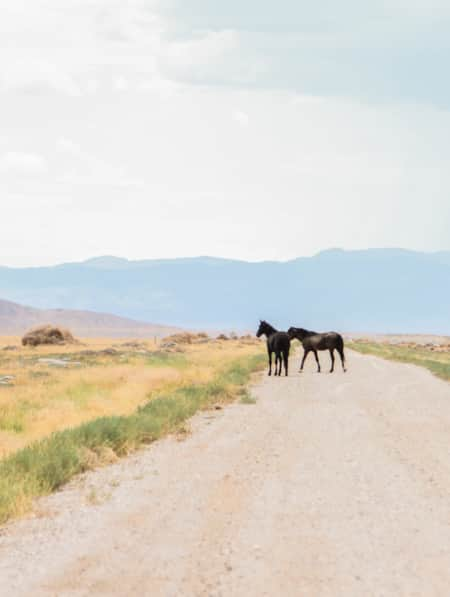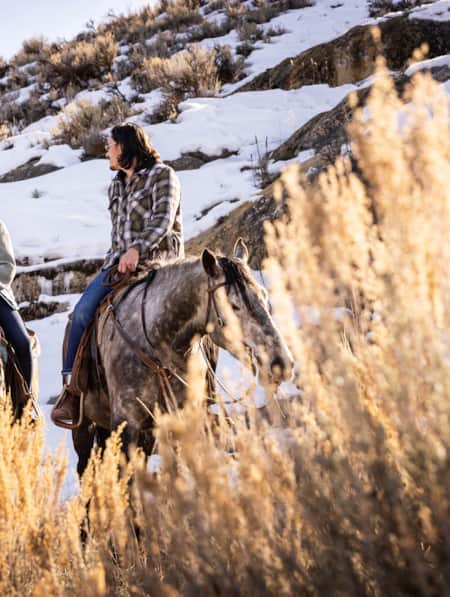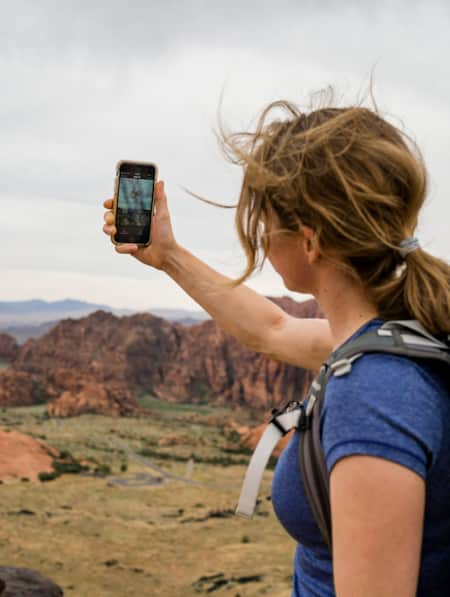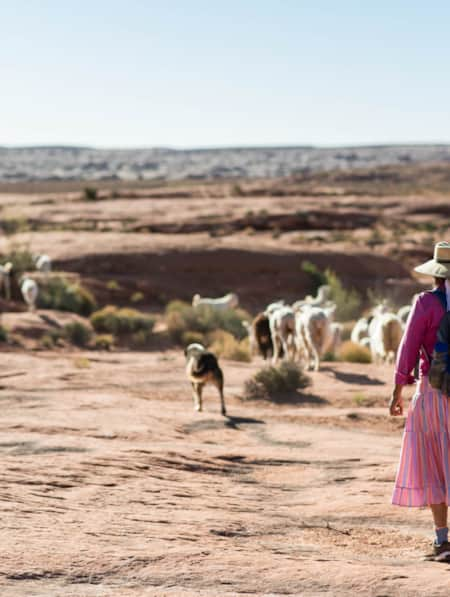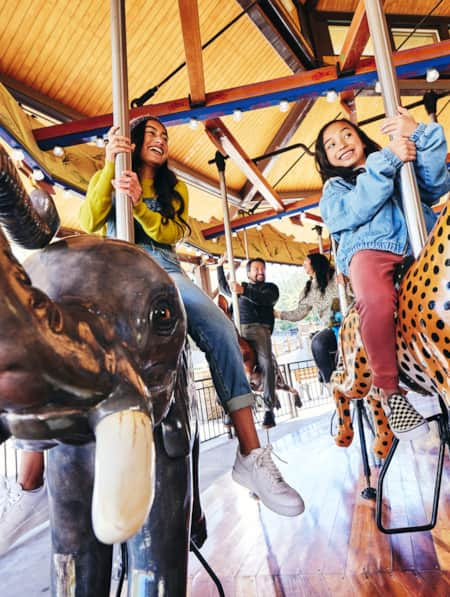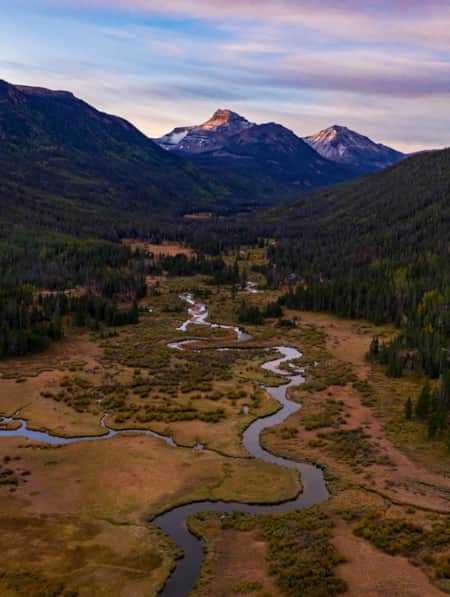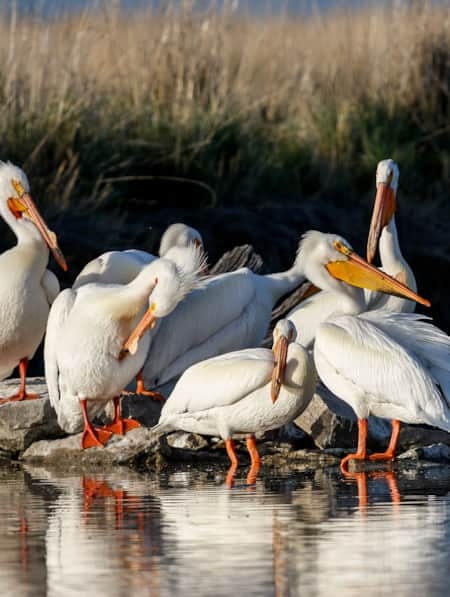Your Guide to Utah’s National Wildlife Refuges
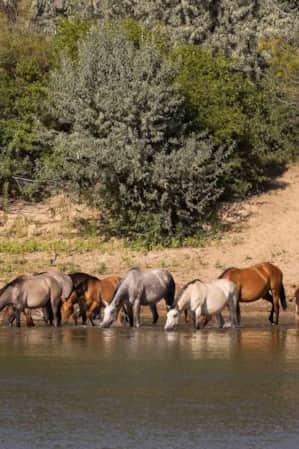
Fish Springs National Wildlife Refuge
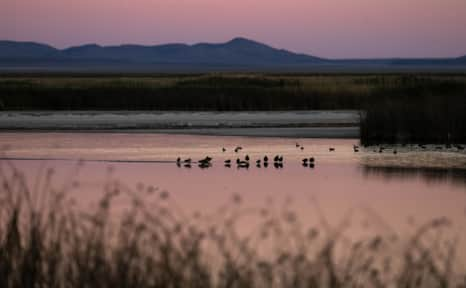
From pronghorn to shorebirds, Fish Springs National Wildlife Refuge is a secluded oasis that provides habitat for hundreds of species.
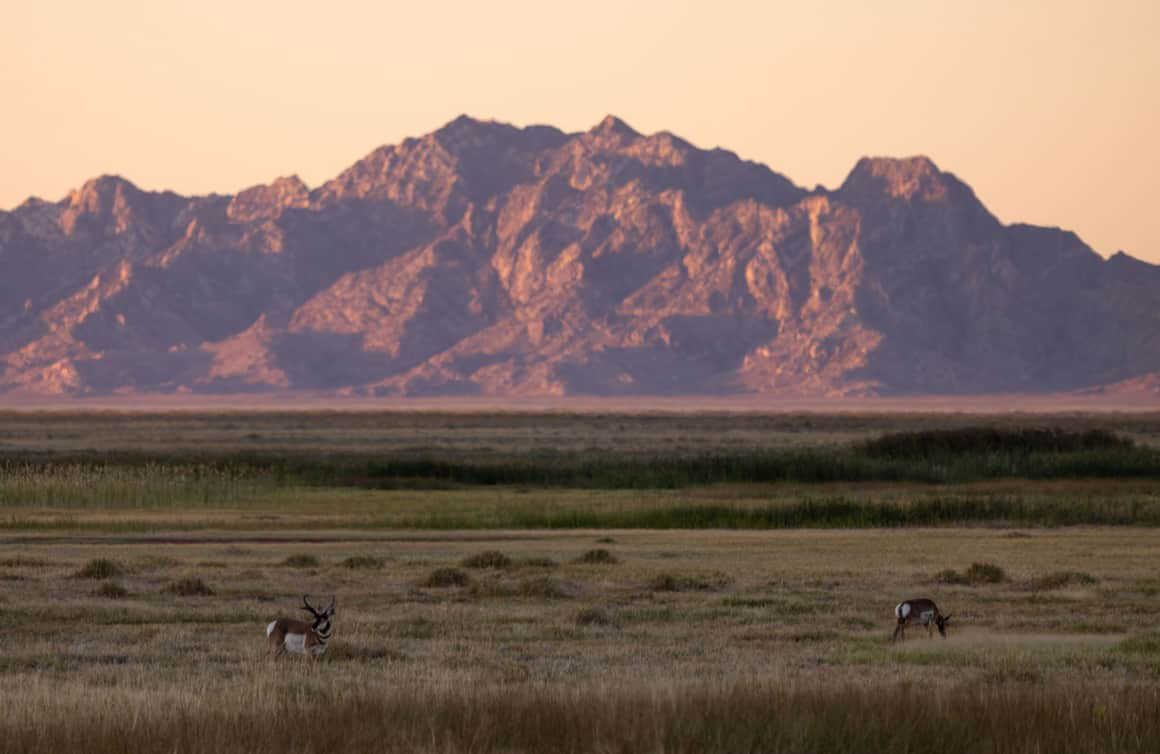
Fish Springs National Wildlife Refuge
Located on the eastern edge of the Great Basin Desert about 135 miles from Salt Lake City, Fish Springs National Wildlife Refuge is one of the most remote national wildlife refuges in the lower 48 states. Surrounded by lush vegetation, the spring-fed pools resemble a scene from the tropics, and after driving across the dusty, desolate landscape, it seems like a mirage. Chattering birds greet visitors at sunrise, and when the mountains fade to pastel purple in the evening, you might spot large game in the meadows. While a handful of visitors make the trek on the weekends, you will likely have the 18,000-acre refuge to yourself during the week. The journey requires planning, but the reward is unparalleled access to wildlife.
Geese, ducks and shorebirds arrive from the south in the spring, and waterfowl, songbirds and other migratory birds return in the fall. During the winter, it’s common to see bald eagles, tundra swans and short-eared owls, and American Avocet chicks make their debut in the early summer. In addition to hundreds of avian species, pronghorn, mule deer, bobcats and coyotes roam the refuge, and Fish Springs also provides a critical migratory habitat for monarch butterflies.
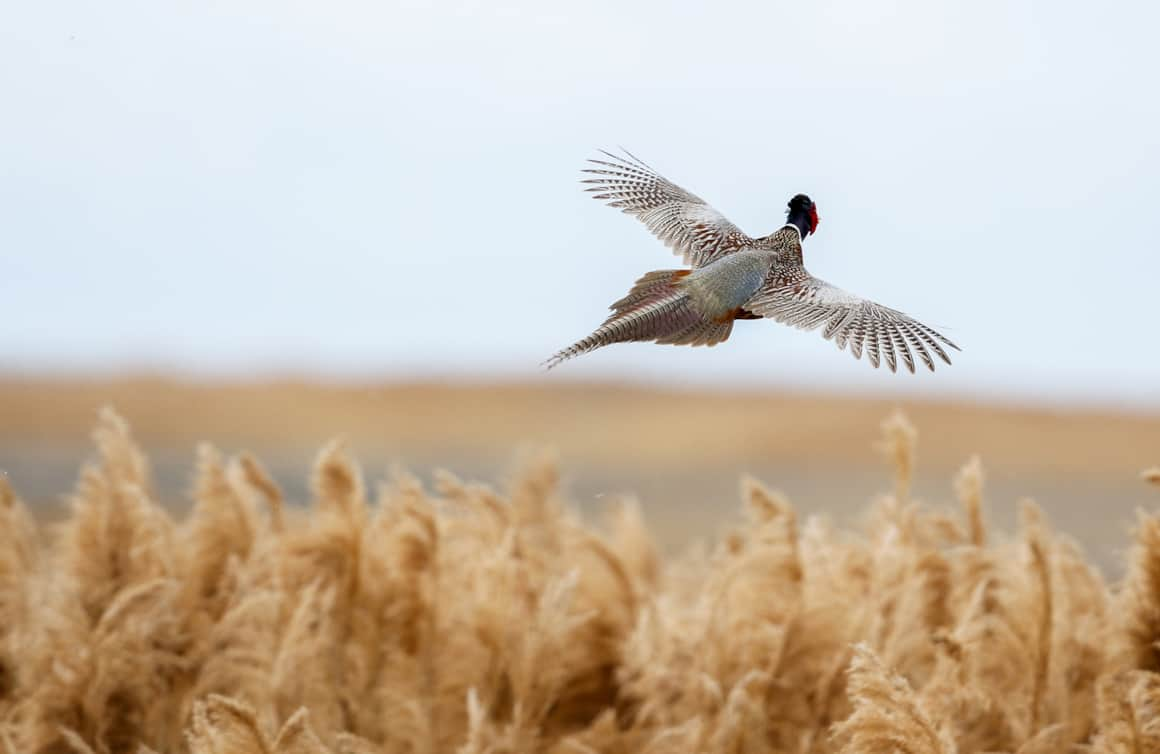
Bear River Migratory Bird Refuge
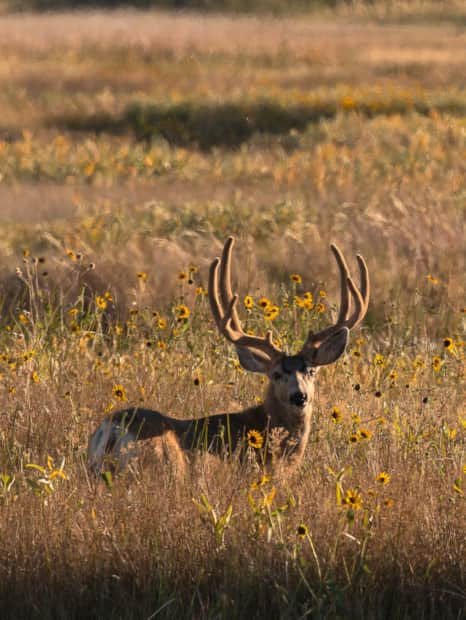
A mule deer buck strikes a pose at golden hour.
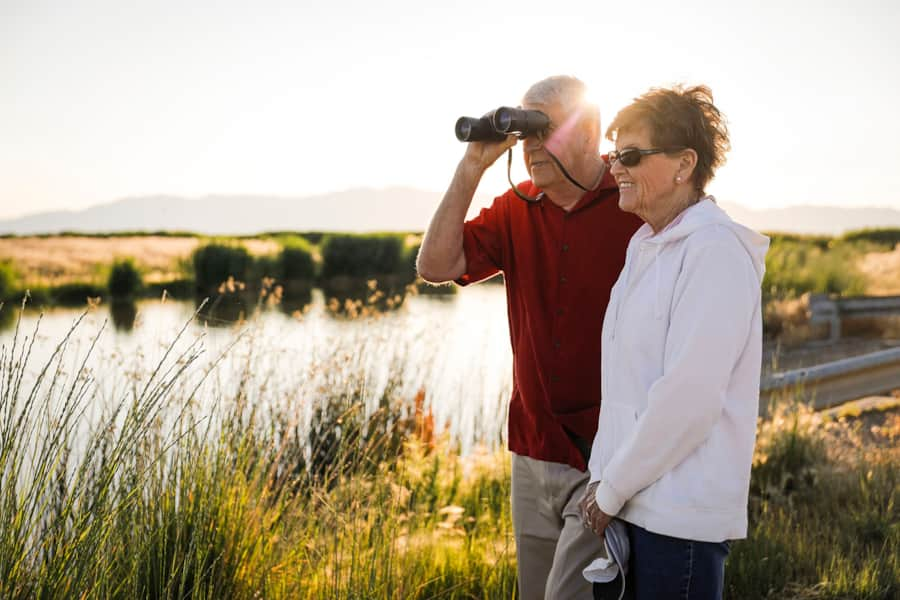
Bear River Migratory Bird Refuge
Access and Road Conditions
The southern route to the refuge via Delta (on Brush Wellman Road and Flourspar Road) includes just over 20 miles of travel on dirt and gravel roads, and it is well maintained. The northern access route via Dugway (on Government Creek Road and Pony Express Road) has approximately 70 miles of travel on dirt and gravel roads, which can have large potholes and sharp rocks. Though it requires spending more time off pavement, the northern route is more direct for those coming from Salt Lake City.
The main auto tour route begins at the visitor center and circles the Mallard and Curlew Pools, with several pullouts for wildlife viewing. However, the roads around the Pintail, Egret and Harrison Pools are also in excellent condition, so rather than driving the route as a loop, it’s best to set aside several hours to explore the grid of roads around each pool. The Thomas Ranch Picnic Area has seating, shade and pit toilets, and restrooms with flush toilets are available at the visitor center. While the refuge is not known for its hiking trails, a few short walking paths on the south side of the refuge lead to hunting blinds. The refuge is open from sunrise to sunset.
Planning and Safety
Check the weather before your visit, as heavy rain and snow can make the roads impassable due to flash floods and mud. (Read: Utah Road Conditions & Safety) Ensure your vehicle is in good condition (check your tires, brakes and fluids) and carry recovery and emergency gear, including a full-size spare tire, an air compressor, a tire repair kit, a first aid kit, non-perishable food, water and blankets. While a high-clearance 4x4 vehicle is not necessary, passenger cars (or vehicles without all-terrain tires) are not advised, as flat tires are common on both routes. Gas up before you go, and consider carrying extra fuel. Tow operators service the area, but be prepared to spend the night if you need assistance. Cell signal is limited, so consider bringing a satellite communication device like a Garmin InReach, and carry paper maps as well. (Read: Responsible Travel in Utah)
Once you get off the paved road, remember to slow down. “Dirt roads can be unpredictable with loose surfaces, washouts and wildlife,” adds Carl Millegan, Wildlife Refuge Manager with the U.S. Fish & Wildlife Service. “Reducing speed helps you maintain control and avoid accidents.” It’s also important to maintain a safe distance from other vehicles to avoid dust clouds that can reduce visibility.
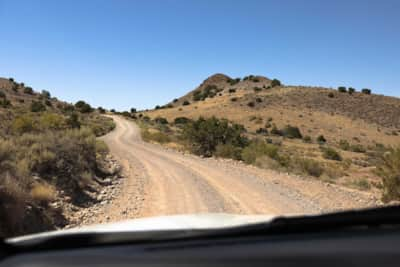
Lodging, Dining and More
If you’re coming in via the south, Delta has several gas stations, motels, RV parks and privately managed campgrounds. The most popular restaurants include the Rancher Motel & Cafe (serving breakfast, lunch and dinner), and the Ashton Burger Barn and West Desert Grill (both open for lunch and dinner). Other attractions include Little Sahara Recreation Area, the Great Basin Museum and Yuba Lake State Park.
For those entering via Dugway, there is a Holiday Inn Express in town, plus the Coyote Run Campground and RV Park. The closest restaurants and gas stations are between Tooele and Bauer on State Route 36. The primitive Clover Springs Campground is located between Bauer and Dugway, and the Simpson Springs Campground is 20 miles past Dugway en route to the refuge. If you’re coming in via Salt Lake City, consider making a stop at the Great Salt Lake State Park, which is just off Interstate 80.
Ouray National Wildlife Refuge
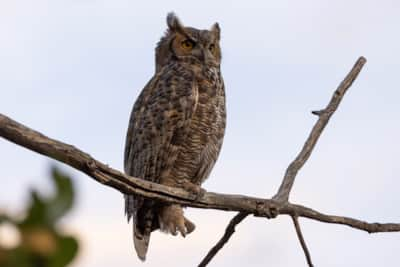
Ouray National Wildlife Refuge sits along the Green River Corridor just 20 miles south of Vernal, and from clay bluffs to a wide range of wildlife, it’s a hidden gem in northeast Utah. The refuge features a unique mix of habitats, including floodplain wetlands, mature riparian woodlands and upland desert, making it a dream destination for photographers keen to capture wildlife with stunning backdrops.
“I particularly enjoy fall at the refuge, when the cottonwood leaves are changing, the elk are bugling, and the sandhill cranes are beginning to return in large numbers,” notes Lisa Wilson, Wildlife Refuge Manager at Ouray National Wildlife Refuge. Winter is quieter, while spring and summer provide opportunities to spot a range of migratory and resident birds, including Canada geese, red-winged blackbirds, American goldfinches, horned larks, savannah sparrows, grebes and bald eagles. Visitors may also see elk, pronghorn, deer, bears, porcupines and even feral horses.
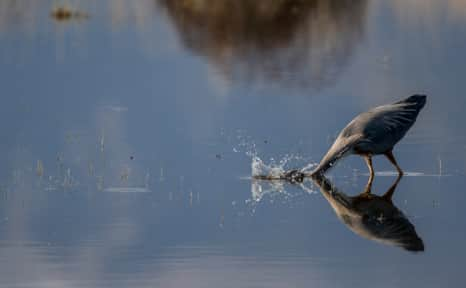
Bear River Migratory Refuge
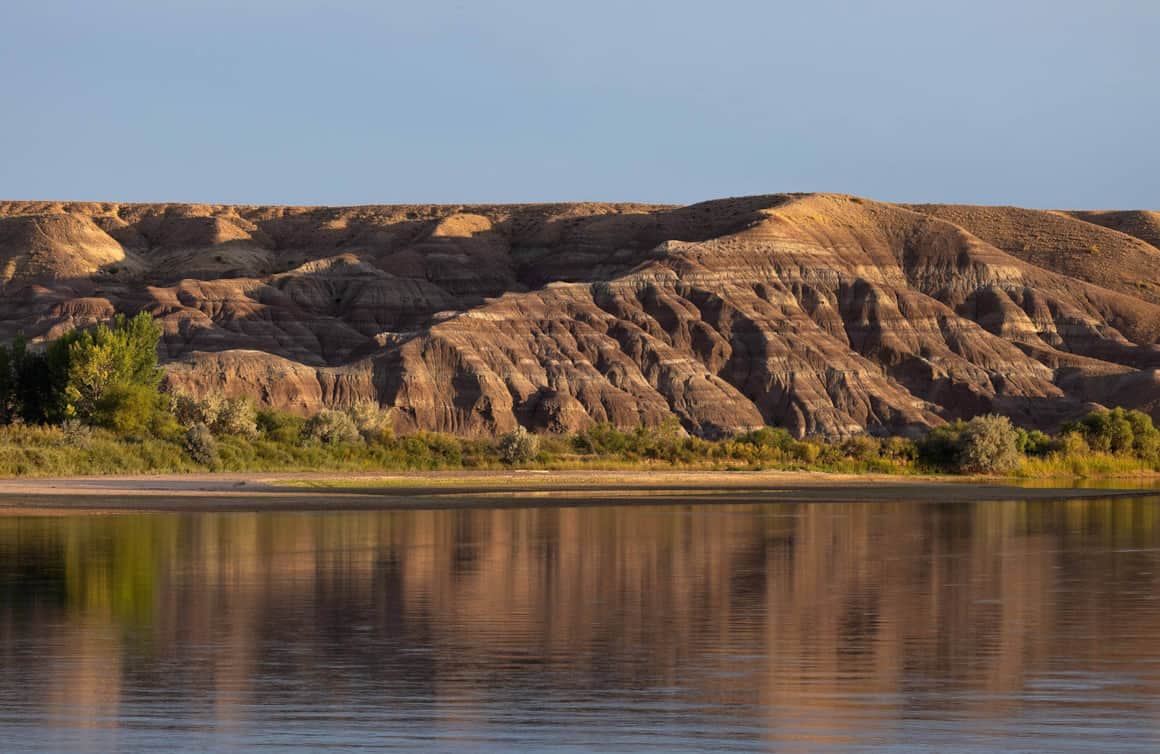
The clay bluffs along the Green River glow before sunset; a great blue heron fishes in the shallows.
Access and Road Conditions
After turning off the paved Utah State Route 88, the road to the Ouray National Wildlife Refuge Visitor Center is just over a mile of well-graded gravel. A high-clearance 4x4 vehicle is not required to access any of the refuge roads, but they can become impassable after heavy rain or snowmelt, so it’s important to check the weather before your visit.
Though it was a loop previously, the current auto tour route runs the length of Wildlife Refuge Road, with several side roads to explore. Just before the visitor center and pit toilets, a clearly marked south road splits from the main road, leading to the one-mile Sheppard Bottom hiking trail. The Sheppard side road runs approximately two miles one way, and it ends with a parking area by the Green River. Once back on the main refuge road (and about half a mile past the visitor center), a second south side road runs alongside the river for a mile and a half, ending with a parking area and fishing platform offering phenomenal views of the river and badlands. Tucked between these roads are several farm fields and meadows, which also provide opportunities to see wildlife, especially in the morning and evening.
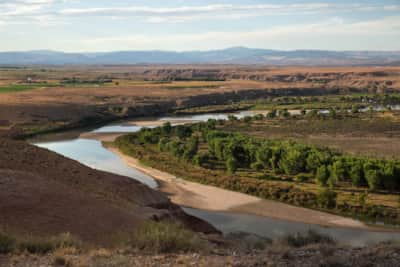
Once back on the main Wildlife Refuge Road, you can continue on for five miles to access the Ouray National Fish Hatchery. The hatchery is raising the bonytail and razorback sucker, two of the four protected Colorado River fish species. Visiting hours at the hatchery are daily from sunrise to sunset. However, for the best views of the landscape, you’ll want to venture north on Leota Bluff Road, which splits off from Pipeline Road just half a mile from the visitor center. The clearly marked Leota Bluff Road climbs to the top of the clay bluffs, offering incredible views of the horseshoe bends on the Green River. The refuge is open from sunrise to sunset.
Lodging, Dining and More
The closest town with gas stations, hotels and RV parks is Vernal, which is a 40-minute drive from the Refuge entrance. The Pelican Lake Campground is a 20-minute drive from the Refuge, and it has 11 individual sites and two group sites. While there are fire pits, camp tables and pit toilets, this primitive BLM campground does not have water or electrical hookups. The top-rated restaurants in Vernal include Abby’s Cafe (open for breakfast and lunch), Antica Forma Pizzeria (open for lunch and dinner) and Vernal Brewing Company (open for lunch and dinner). Other nearby attractions include the Utah Field House of Natural History State Park Museum and Steinaker State Park. Farther north on Highway 191 is Red Fleet State Park and Flaming Gorge National Recreation Area.
Bear River Migratory Bird Refuge
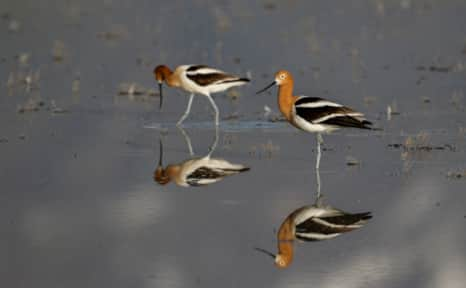
American Avocets seeking food along the waters of Bear River Migratory Bird Refuge.
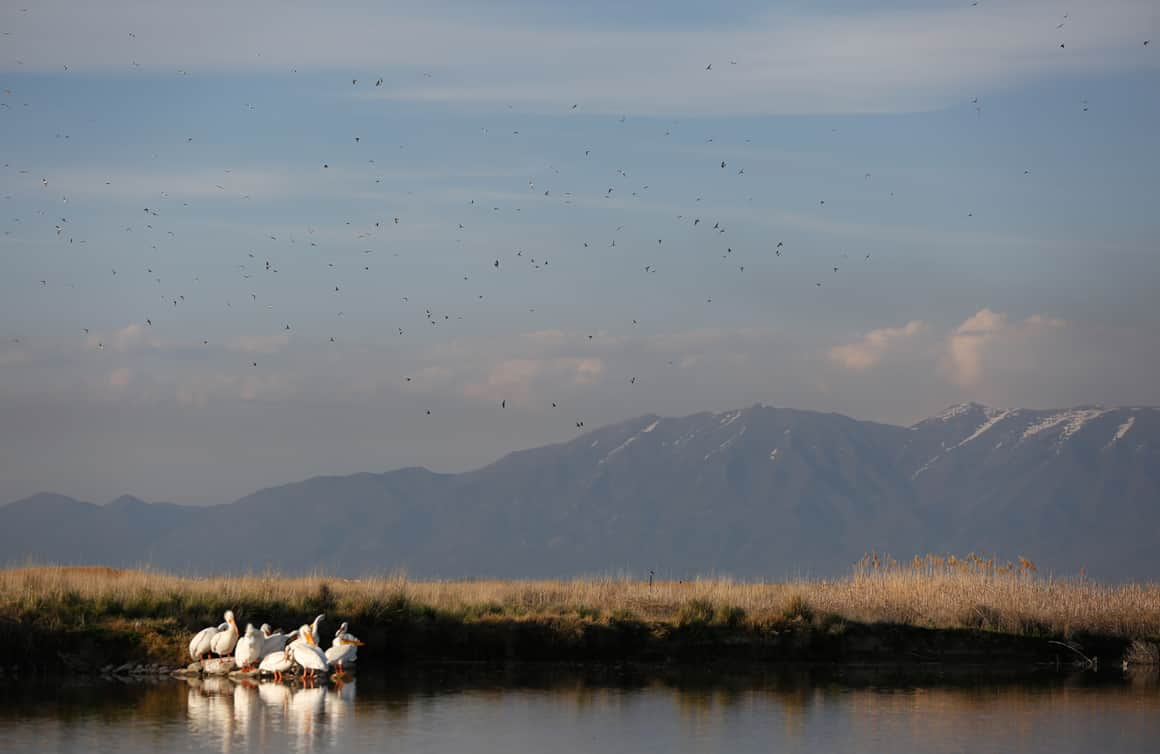
A serene late afternoon scene along the 36-mile Auto Tour Route at Bear River Migratory Bird Refuge.
Just a ten-minute drive from Brigham City (and an hour north of Salt Lake City), Bear River Migratory Bird Refuge is the ultimate urban birding destination. Situated where the Bear River flows into the Great Salt Lake, the refuge provides a unique mix of freshwater marshes and arid desert lands, supporting a wide variety of bird species. “With its vast mosaic wetlands and open water, Bear River Migratory Bird Refuge offers unmatched bird density and visibility, making it a haven for both birds and birders alike,” says Carl Millegan, Wildlife Refuge Manager at Bear River Migratory Bird Refuge. “This is refuge for birds — and a retreat for the soul.”
The refuge lies along the eastern edge of the Pacific Flyway and the western edge of the Central Flyway, making it a critical resting, feeding and nesting area for tens of thousands of birds each year. Over 250 bird species have been recorded at the refuge, with 76 nesting species to date. Geese and ducks arrive in early March, and shorebird migration lasts from early April to mid-May. In June and July, visitors might spot young American avocets, black-necked stilts and western grebes. Tundra swans arrive in mid-October and stay through December, and from December to March, northern harriers, rough-legged hawks, prairie falcons and bald eagles frequent the marshes.
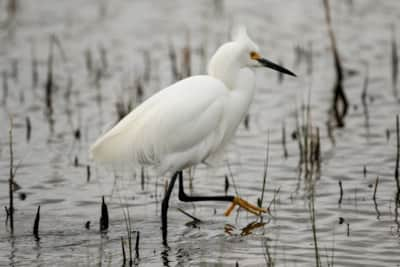
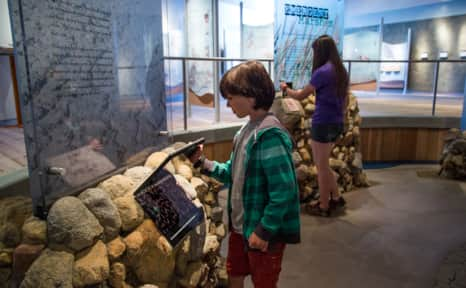
Bear River Migratory Bird Refuge Visitor Center
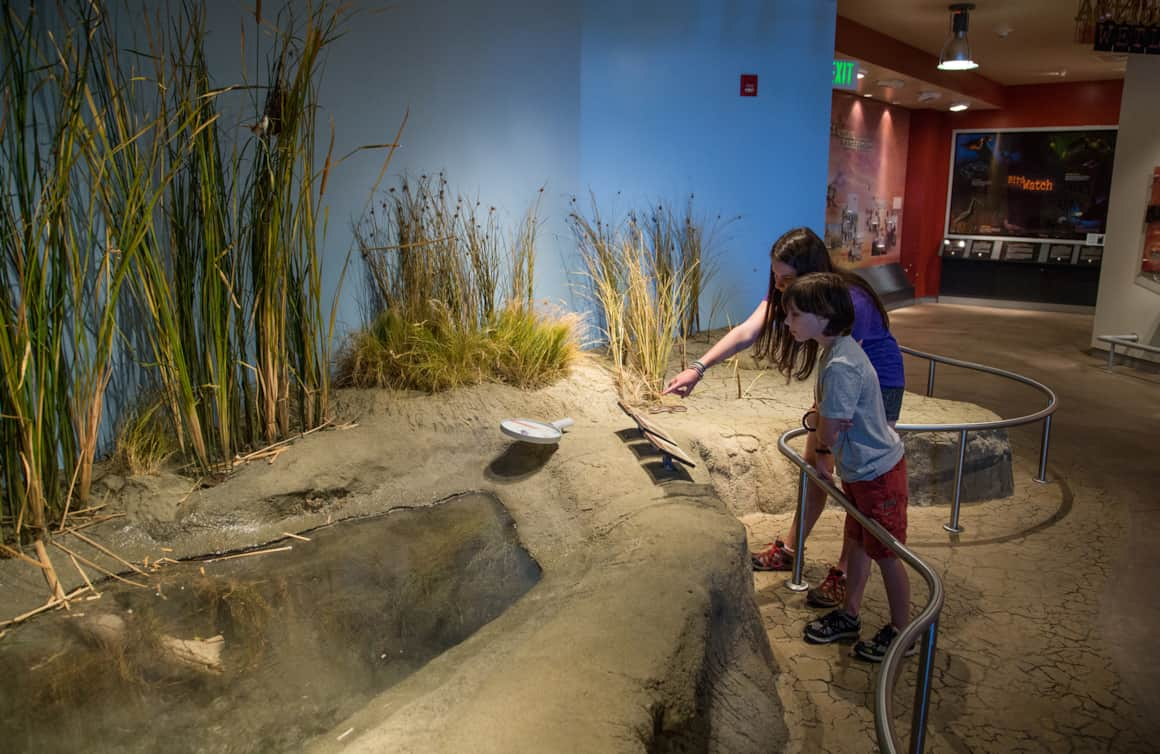
The world-class visitor center at Bear River Migratory Bird Refuge has a wealth of exhibits and interpretive displays.
Access and Road Conditions
The visitor center is located just off Interstate 15, with plenty of parking. The complete Auto Tour Route is approximately 36 miles roundtrip, and it is a mix of pavement and gravel. Turn left from the visitor center to begin the 12-mile, paved section of the route, and stay on Forest Street for around two miles. The road curves left and becomes Bird Refuge Road, which continues for ten miles. This route runs next to the Bear River, with several viewing areas. When the pavement ends, you can turn around or continue on the 12-mile gravel section of the Auto Tour Route. The one-way gravel road is graded and in excellent condition, and a high-clearance 4x4 vehicle is not necessary. However, heavy rain or snow can make the road impassable, so check the weather before your visit. The Auto Tour Route is open daylight hours year-round, weather and road conditions permitting.
Lodging, Dining and More
From gas stations to golf courses, Brigham City has every service imaginable, plus a charming and historic Main Street with shops and eateries. Brigham City has a half a dozen hotels, and nearby options for campers include the Mantua Waterfront RV Resort & Cabins and the Willard Peak Campground. Locally-owned Buzzbru is the best spot in town for a latte and an artisan breakfast sandwich (open for breakfast and lunch), and other top-ranked restaurants include the Old Grist Mill (open for lunch and dinner) and the Maddox Ranch House (open for lunch and dinner). Nearby attractions include Willard Bay State Park and the Brigham City Museum of Art and History.
When exploring Utah’s natural wonders, respecting wildlife is crucial for the safety of both wildlife and humans. Here are some guidelines to help keep Utah’s wildlife wild and thriving:
Keep a Safe Distance and Go Slow
Always maintain a safe distance from wildlife; this is typically 300 feet from bears, and at least 75 feet from other big game like moose, elk and deer. Whether you’re driving or on foot, move slowly to avoid startling wildlife, and try to keep noise levels low. Use binoculars or a zoom lens to get a closer look, and remember to use a flash-free setting on your camera, as bright flashes can startle wildlife.
Do Not Approach or Touch Wildlife
Never touch, follow or chase wildlife, as this can stress out animals and lead to potentially dangerous situations. Avoid areas where animals are nesting or raising their young, and if an animal appears to be injured or sick, do not attempt to move them; rather, contact local wildlife authorities.
Never Feed Wildlife
Feeding animals can harm their health, alter their natural behaviors and make them more vulnerable to predators. It can also cause them to be aggressive with humans and other wildlife.
Store Food Properly and Dispose of Trash
Be sure to keep food within arm’s reach or locked in a vehicle, and dispose of trash or pack it out. This helps prevent all kinds of wild animals from becoming dependent on human food.
Supervise Your Pets
Keep dogs on a leash and under control at all times, as they can disturb wildlife, spread diseases and damage habitat. Unsupervised pets also run the risk of being attacked by wildlife if they are perceived as a threat.
Stay on Established Roads and Trails
Stay on marked roads and trails, and avoid closed areas. This helps protect wildlife and the environment, and also decreases the chance that you will get lost, injured or stuck in a remote area.
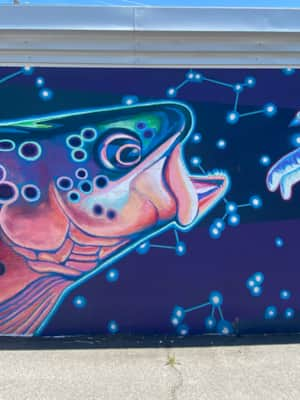
Experience Utah's Wild Side with the Wildlife Walls Mural Trail
The Utah Wildlife Walls Mural Trail connects impressive wildlife murals with nature and wildlife viewing opportunities across the state.
